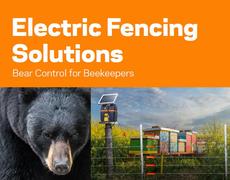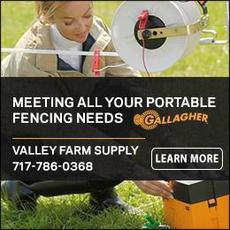A common concern of all electric fence users is lightning strike and a blown up energizer. Mains
units should be installed with lightning protection on both the incoming power side and the fence
side. For incoming surge protection, a plug-in surge protector should be installed at the power outlet
and the energizer plugged into the surge protector. This is the same type of protector as used on
home computers and other valuable appliances and can be picked up at almost any appliance or
variety store. Most rural electric systems experience daily variations in voltage flow that are as
hazardous to electric fence energizers as lightning strikes and so a surge protector is good insurance
for everyday usage.
For lightning protection on the fence side, several practices are advisable. Location of the energizer
is the first step. Place the energizer in a building in a low-lying area or a lightning rod protected
building. Avoid placing it in a building on a hilltop with no lightning rods. Frequently there is no
choice where the energizer is to be installed, but when there is a choice use common sense and stay
away from lightning prone areas.
The ground stakes should be well away from the ground system of power poles or the service box.
Never use the existing ground system of power poles or breaker boxes for the energizer ground. A
short in the power line can feed into the fence system through the common ground and create a
dangerously charged situation in the fence as well as damage the energizer. A lightning strike on a
power line with a common ground with the energizer creates a situation where the energizer could
be damaged through both the incoming line and the ground system. The ground system for the
energizer should be placed at least 25 feet from the nearest power line ground rod.
An induction coil or lightning choke should
be installed in the fence lead-out wire near
the energizer. The induction coil is made by
coiling 6 to 8 loops of heavily insulated 12
gauge wire in an 8 to 10 inch diameter circle
and taping the loops together. A lightning
choke is made from a loose coil of hi-tensile
wire with 8 to 12 loops spaced about 2
inches apart on a mounting board. Either
device acts as a lightning brake by forcing
the high voltage lightning surge into a
circular flow and creating a resistance field
by which the flow of lightning energy is
reversed. The energy flow goes back up the
fence and away from the energizer. The
induction coil is much easier to assemble and
is our preference. Once we started using
induction coils in our installations we
virtually eliminated all damage to energizers
due to lightning strikes.
A lightning diverter should be installed where the
lead-out wire attaches to the fence. A lightning
diverter at this location serves the double purpose
of diverting some of the initial energy surge to
ground and serving as a route of exit from the fence
of the energy flow reversed by the induction coil.
This device has two terminals for attaching wires
and leads from each terminal that are set with a
wide enough gap to prevent the normal energizer
voltage flow from arcing across, but close enough
to allow a lightning voltage spike to jump easily
across and pass to ground. The top terminal is
attached to the uppermost electrified wire and the
lower terminal to a ground rod. The lightning
diverter ground must be separate from the energizer
ground. If a common ground rod is used, the
lightning spike can pass through the common
ground system and return to the energizer
potentially damaging the circuitry. It is relatively
cheap insurance to install several lightning diverters
through the fence system at lightning prone
locations and where fences network together.
Ideally, more total ground rod capacity should be installed under the lightning diverter system than
under the energizer itself. Several types of lightning diverters are available, but all work on the same
principle.
July 25, 2014






Comments
Jump to comment formashu said:
A very helpful blog on lightning protection device, I am having this device at my home and also at my office. It is efficiently running since 3 years. No problems as previous was.
kringga said:
You will need a larger lightning brake than that. It is only about 26 micro-henrys. At a 33 kHz pulse, it will still only present about 5.5 ohms of resistance to a 300MV pulse. A larger brake (larger radius, more turns per inch, and an iron core (optional)) and a more robust grounding system located before the brake is required. Your suggested protection scheme will only work with a far off strike’s inductive force and not much else.